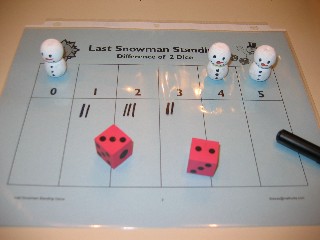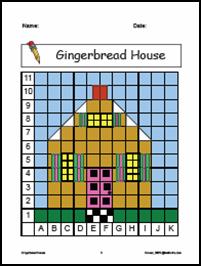The snowmen pictured above were created with two wooden beads glued together, then painted white, The face was added with sharpie pens. Just be sure to buy the beads that have a flat bottom so that the snowmen will stand. Or, use any manipulative as snowmen.
Download the Last Snowman Standing Game which includes directions and game mats for three different versions of the game:
- Sum of Two Dice Version to practice addition facts
- Difference of Two Dice Version to practice subtraction facts
- One Die Toss for a simplified version to analyze the probability of a die toss
Data Collection: The directions for each version also include directions for data collection and analysis of the outcomes of the games. Be sure to incorporate these activities, if at all possible, as games offer a highly motivational study in probability. Students love to "play games" to collect data. They're also eager to analyze games so that they learn how the game works and what strategies they can use to improve their odds of winning.
Differentiation: This game offers many opportunities to differentiate the activity. First of all, teachers are able to select from three different versions. Secondly, each teacher should differentiate the game analysis to meet the instructional level of his/her students. Most students can handle the questions with teacher guidance. Older students and talented primary students may be challenged to analyze the game and answer the questions in small groups.








